There are two main radar beam aspects to consider when viewing images from any Doppler radar. The first one deals with the beam spreading as it moves farther from the radar transmitter. The second is how the beam bends, called refraction, as it travels through the atmosphere.
Beam Spreading
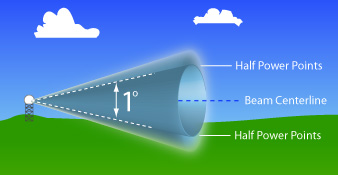
While often depicted as a cone with distinct edges, the radar beam is better visualized much like that of an ordinary household flashlight. In a darkened room, take a flashlight and, while standing at least 10 feet away, shine it on a wall. You will notice the bright area around the center of the beam but will also notice the brightness fade farther away from the beam's center point. You will also notice the width of the beam changes as you move toward or away from the wall. The beam of energy transmitted from the Doppler radar is no different. A conical shaped beam is formed as the energy moves away from the radar. Most of the energy is located near the center of the beam, with energy decreasing away from the center.
By convention, we define the width of the beam as the distance between the two half-power points – the point where there is a 50% reduction in the radar's transmitted energy. For the WSR-88D, the angle between the two half power points is around 1°. Outside of the half power points, the energy rapidly decreases.
The radar beam spreads out approximately 1,000 feet for every 10 miles of travel, so at 120 miles from the radar, the beam is over 2 miles wide. This spreading of the beam impacts the resolution of the returned data. Small storm scale features that are easily seen close to the radar are often masked at long distances. This effect is also why “solid” lines of storms may appear to break up as they get closer to the radar. In reality, the line of storms may have never been continuous, but the radar was unable to resolve the gaps in the line.


Beam spreading affects the resolution of the products available to forecasters. These two images of a tornadic thunderstorm were taken at the same time from two different radars. In the image on the left, a well defined “hook echo” is clearly evident to the northwest of Jarrell, TX. An EF-3 tornado was in progress at this time. The Central TX WSR-88D sampled this storm at a range of 20 miles. The beam height was approximately 1,300’ above the ground and the beam width was about 2,000’. The image on the right was taken from the WSR-88D in Fort Worth, TX, at a range of 98 miles. The beam height was approximately 11,600’ above the ground and the beam width was nearly 2 miles. At this height and range, the radar is no longer scanning the important low level features associated with this storm. Any evidence of a hook shape is faint at best, and tornado detection becomes increasingly difficult.
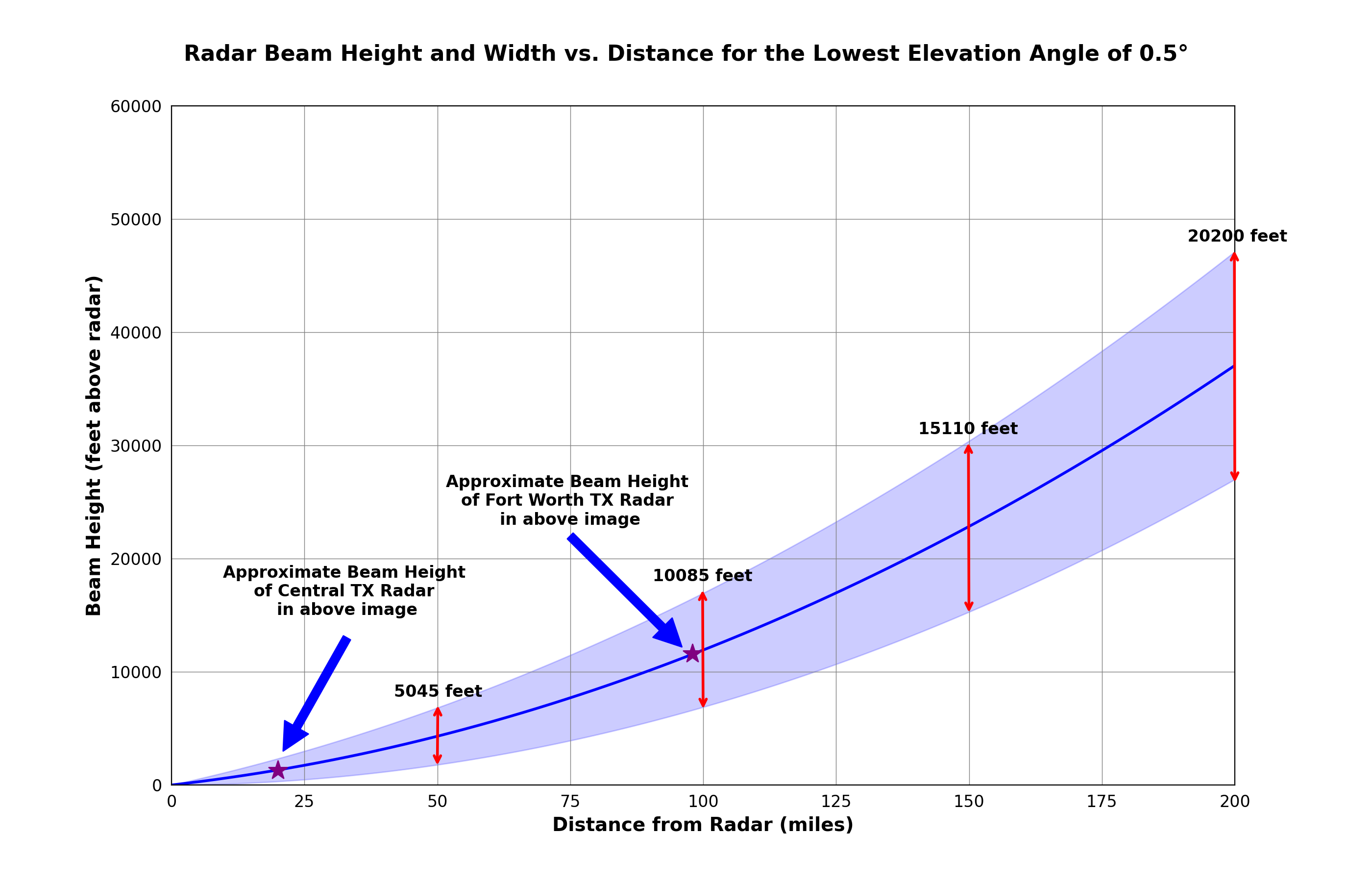
This chart of the lowest elevation scan (0.5°) shows how the radar beam not only gets higher above the ground with distance but also becomes wider. This rate of spread is about 1,000 feet for every 10 miles of travel. At 100 miles, the beam is nearly 2 miles wide.
Refraction

In addition to beam spreading, the beam also does not travel in a straight line – it is bent due to differences in atmospheric density. These density differences, caused by variations in temperature, moisture, and pressure, occur in both the vertical and horizontal directions and affect the speed and direction of the radar beam.
The denser the atmosphere, the slower the beam travels. Conversely, the less dense the atmosphere, the faster the beam travels. These changes in density can occur over very small distances, so it is common for the beam, as it spreads, to be in areas of different densities at the same time. The beam will bend in the direction of the slower portion of the wave.
The atmospheric density naturally decreases with increasing elevation. This is primarily due to the decrease in air molecules and, consequently, air pressure as elevation increases. This means the top portion of a beam in the atmosphere can move faster than the bottom portion.
Under normal atmospheric conditions, when there is a gradual decrease of pressure, temperature, and humidity with height, a radar beam's curvature is slightly less than the Earth's curvature.
Subrefraction and Superrefraction
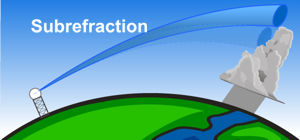
Atmospheric conditions are rarely normal. If density decreases quicker than normal with height (density is less than normal), then the beam bends less than normal and climbs excessively skyward.
This phenomenon is known as subrefraction. Subrefraction causes the radar to overshoot objects that would normally be detected. Distant thunderstorms might not be detected with subrefraction, or their intensity may be under-reported as the beam hits only the top portion of the thunderstorm cloud.
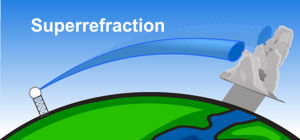
Conversely, if density decreases slower than normal with height (density is greater than normal), then the beam bends more than normal and is curved more toward the Earth's surface.
This phenomenon is called superrefraction. Superrefraction causes the radar beam to be closer to the Earth's surface than what would occur in a normal atmosphere.
This can lead to overestimating the strength of a thunderstorm as the beam would be detecting more of the core of the storm versus the weaker upper levels.
Ducting
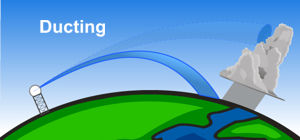
An extreme case of superrefraction causes the radar beam to bend more than the Earth's curvature. This can result in ducting. Ducting often leads to false echoes also known as anomalous propagation or simply AP. When this condition occurs, the beam may be refracted back towards the surface where a road or railroad track runs parallel to the radar beam, making it possible to view cars or trains on weather radars!

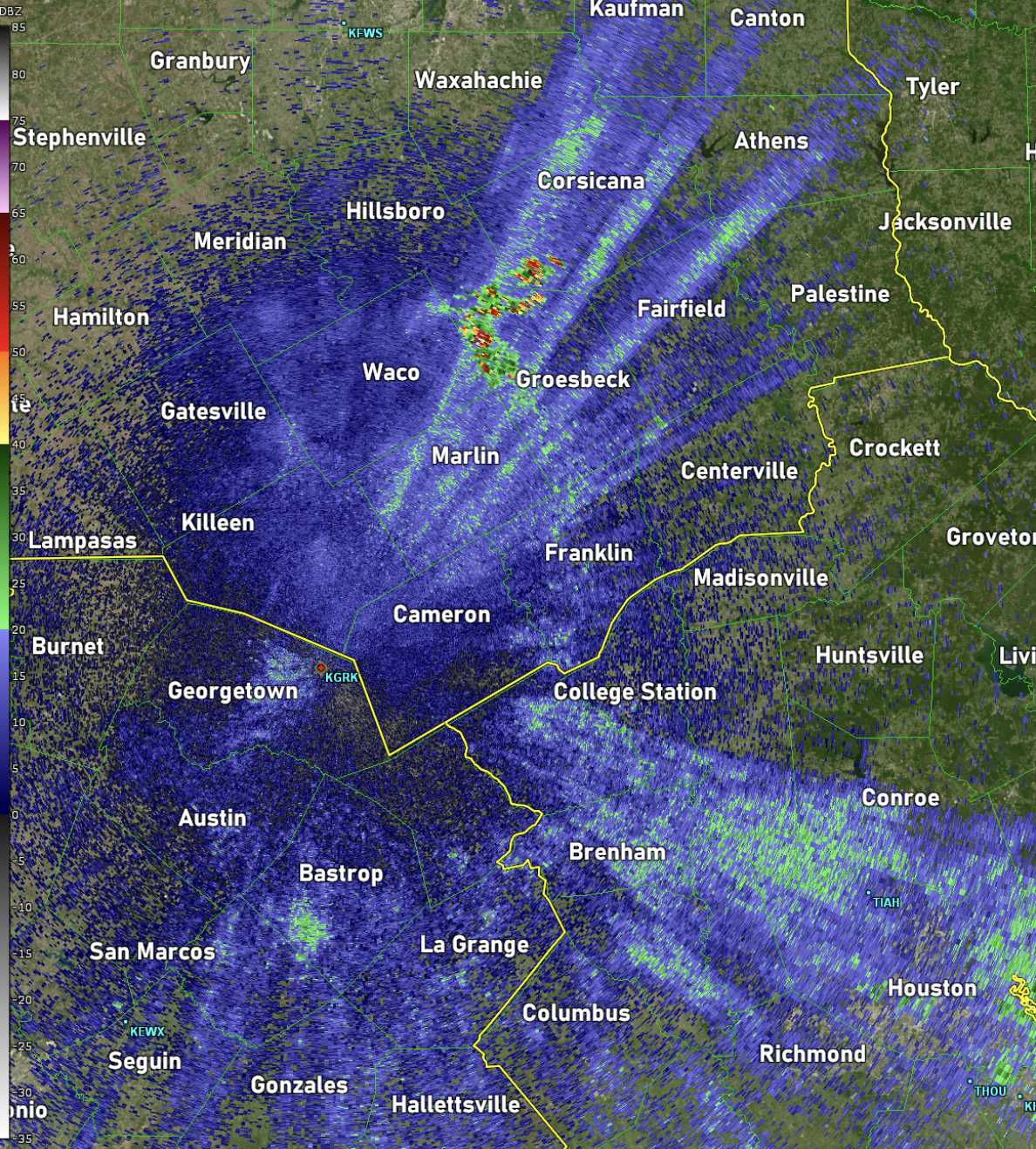
An example of ducting as seen from the Houston, TX, (left) and Central TX (right) WSR-88D radars on the morning of August 2, 2023. Notice the splotchy reflectivity pattern with very high values west and northwest of Houston (left) and east and northeast of Waco (right).


